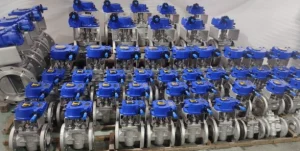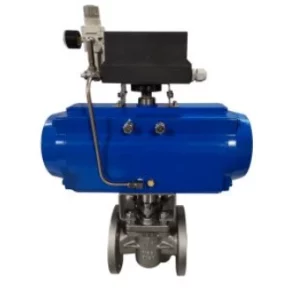Essential Steps for Installing Industrial Plug Valves Correctly

Key Considerations for Selecting Industrial Plug Valves
Identifying the Right Type of Plug Valve for Your Application
Choosing the right kind of industrial plug valve is vital for ensuring effective performance in specific applications. Plug valves are wedge-shaped plugs that rotate within the valve body to control the flow of fluid. Because they are traditional quarter-turn devices, they tend to have the advantage of operating faster and more frequently. The one with what we call a two-port plug valve is the most widely used model, between open and closed position, with ports on different sides.
Assessing Material Compatibility and Pressure Ratings
The composition of the material of a plug valve should match the media it is going to serve. In the same way, evaluating the pressure ratings is essential as it conserves the valve at operational pressures along with the safety and performance level.
Evaluating Environmental and Operational Conditions
Estimating environmental conditions where the plug valve will work is of utmost importance. Ambient temperature variations, exposure to corrosive environments, or abrasive media must be taken into account. In industries such as mining and petrochemicals where coking and erosion come into play, eccentric rotary plug control valves might be made to ensure an effective process to handle these processes.
Preparing for Installation
Gathering Necessary Tools and Equipment
Before commencing installation, gather all required tools and equipment to ensure a smooth process. This includes wrenches, torque tools, sealants, gaskets, and any other items specified by the manufacturer.
Reviewing Manufacturer’s Specifications and Guidelines
Carefully review the manufacturer’s specifications and guidelines to understand the recommended installation procedures. This includes understanding torque levels for bolts and flanges to ensure proper sealing and connection integrity.
Ensuring Safety Protocols are in Place
The most crucial step is to set up all possible safety procedures before installation starts. This can include making sure that everyone has the right personal protection equipment (PPE) and that precautions are in place to keep accidents from happening during installation.
Installation Process of Industrial Plug Valves
Positioning the Valve Correctly in the Pipeline
Checking Alignment with Existing Piping Systems
The industrial plug valve must be properly aligned with existing piping systems as misalignment may result in leaks and other operational problems. Alignment also helps to keep from putting any additional stress on any joint point of the pipeline system.
Ensuring Adequate Support and Stability
Provide adequate support for the valve within the pipeline to maintain stability during operation. This helps in minimizing vibrations that can cause wear over time.
Securing the Valve Connections
Tightening Bolts and Flanges to Recommended Torque Levels
Securely tighten bolts and flanges according to the recommended torque levels specified by the manufacturer. This ensures a secure connection that prevents leaks while allowing for easy maintenance when necessary.
Inspecting Seals and Gaskets for Integrity
Inspect seals and gaskets carefully for proper integrity before the final installation. Worn, damaged, or deployed components shall be replaced or acted on immediately to maintain a reliable seal under working conditions.
By following these steps, a large amount of confidence will be placed while assuring the correct deployment of industrial plug valves, which affect the mode of effective, durable, and reliable operation at different industrial scales. Sticking to the following procedures can help professionals make the flow of their operations the least cumbersome as possible, but manage concerns and risks that can occur if the valve is not installed properly.
Testing and Validation after Installation
Performing Pressure and Leak Tests
Industrial plug valves must undergo pressure and leak each time they are installed. These tests are applied by pressurizing the system to the operating pressure and checking for leaks at the valve connections to determine the integrity of the threads or other joints. This phase actually is important to ensure that the valve can withstand the operating principles and won’t break.
Monitoring for Any Signs of Leakage or Malfunction
Post-installation, constant vigilance for any leakage or malfunction signs is critical. This includes periodic inspection of the valve and any other areas of the pipeline surrounding the valve for leaks, unusual noises, or operating problems. Monitoring systems ensure that you catch leaks or malfunctions early to avoid expensive repairs or downtime.
Documenting Installation Procedures and Results
The other thing one must not forget to do is document the installation processes and test results. Keeping detailed records serves as a reference for future maintenance and troubleshooting, demonstrating that all steps were carried out per industry standards and manufacturer specs.
Maintenance Considerations for Long-Term Performance
Regular Inspection Schedules and Procedures
One of the best ways to ensure that industrial plug valves perform well over a long period is to implement a regular inspection schedule. Inspections must check for wear signs, corrosion, or damage and ensure all the components are working. Averaging a positioned inspection schedule assists catch potential troubles before blowing up.
Lubrication Practices to Ensure Smooth Operation
Lubrication plays an important role in the operation of industrial plug valves. By alleviating friction between moving metal bits regular lubrications reduce wear and tear on the valve and give it a longer life span. This means you must use only the lubricants approved by the manufacturer unless you want to take the risk of compatibility with valve materials.
Exploring Miwival Products Beyond Industrial Plug Valves
Advantages of Miwival Industrial Plug Valves
Miwival industrial plug valves offer several advantages including robust construction suitable for handling erosive fluids, precise control capabilities due to their unique design features like eccentric rotation, and compatibility with various automation options. These attributes make them ideal choices across industries such as refining, petrochemicals, and power generation, among others.
Other Valve Solutions Offered by Miwival
Threaded Ball Valves
Miwival also has an extensive line of durable and efficient threaded ball valves aside from its industrial plug valves. They are available with replaceable seats and seals, anti-static devices, and blowout-proof stems as well as stainless steel safety latch handles. These seals offer outstanding sealing performance with minimum maintenance requirements and are designed for a wide range of industrial environments.





